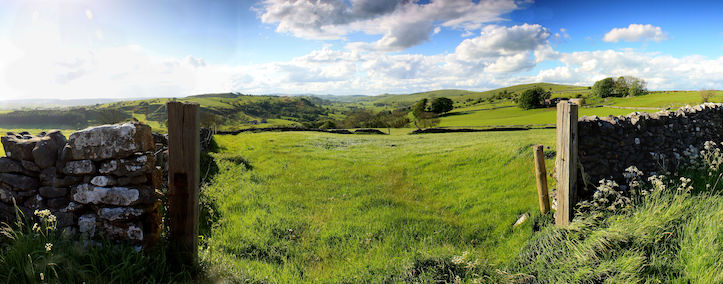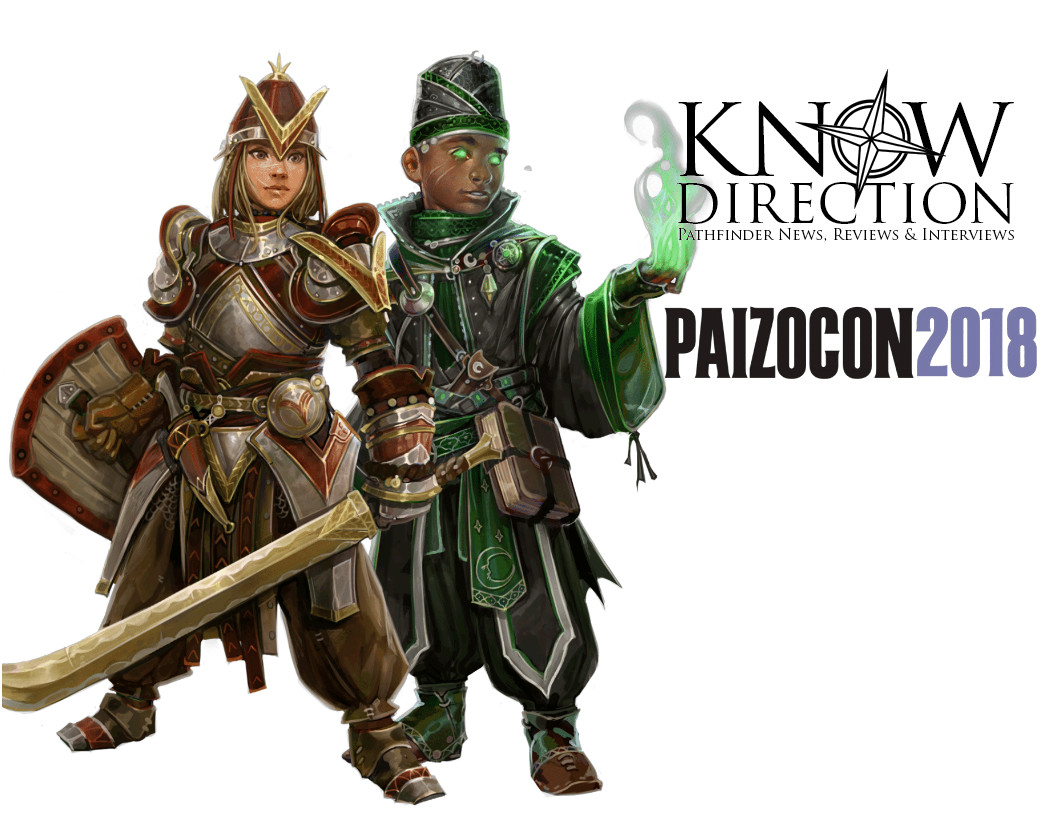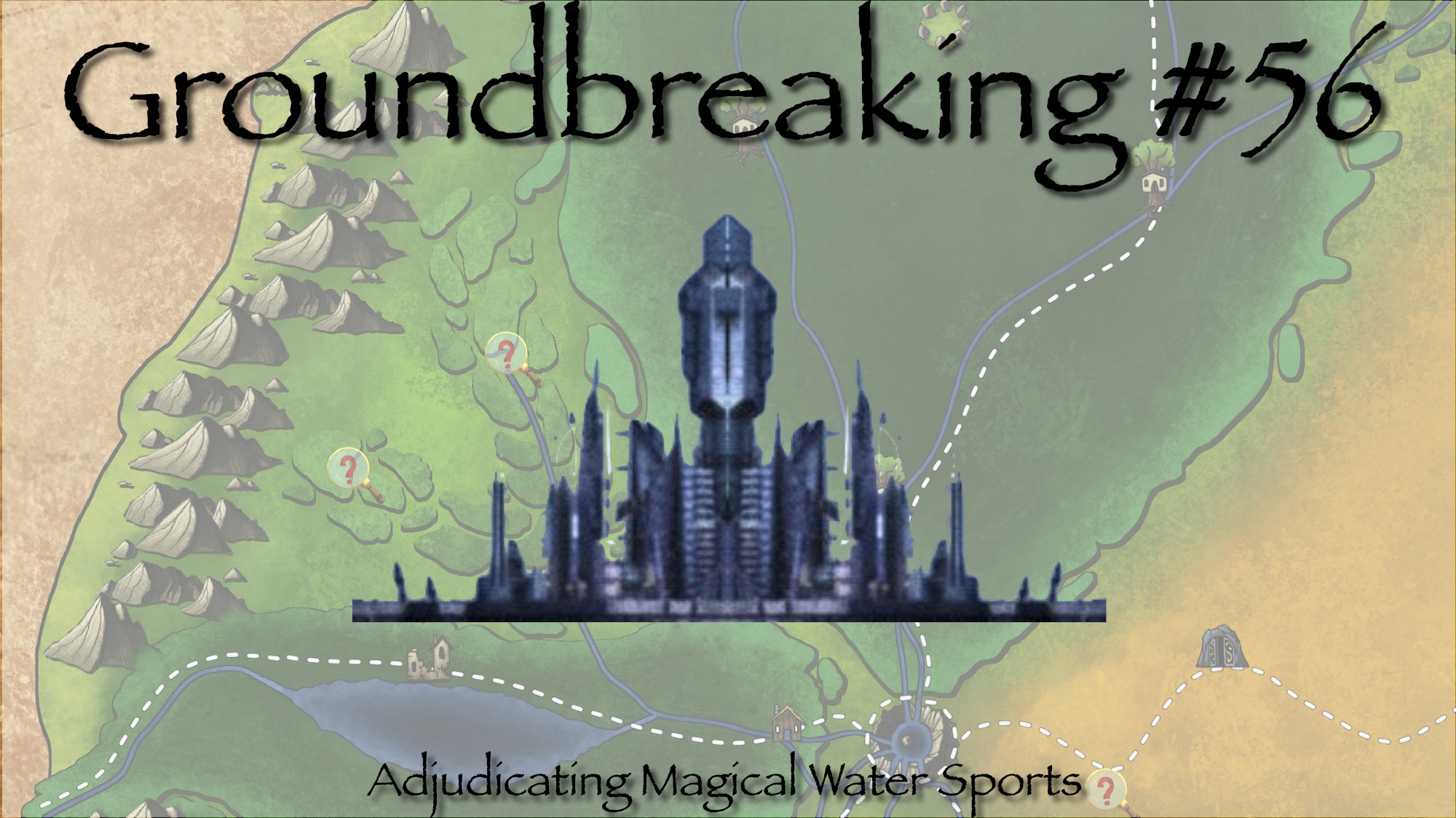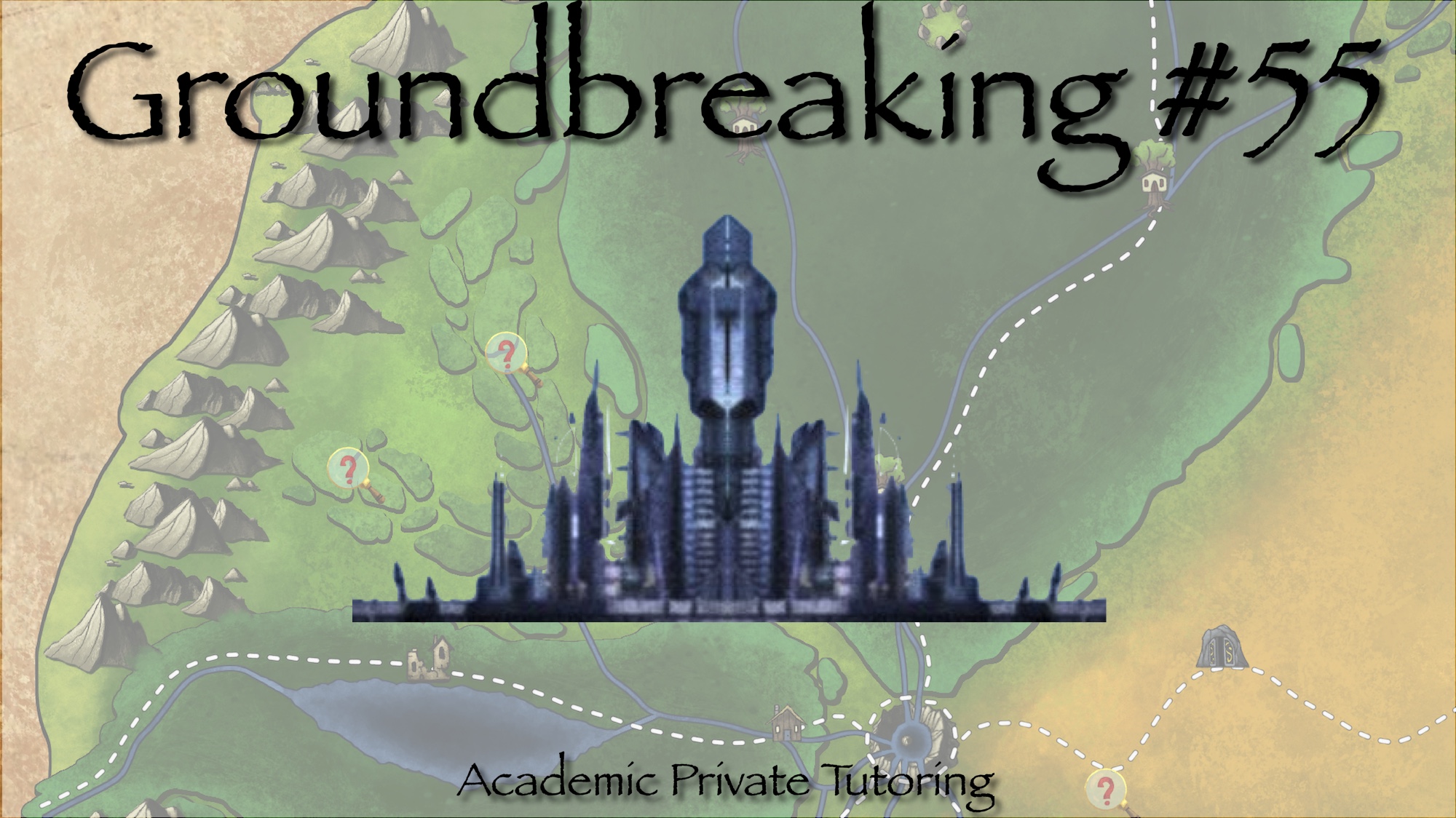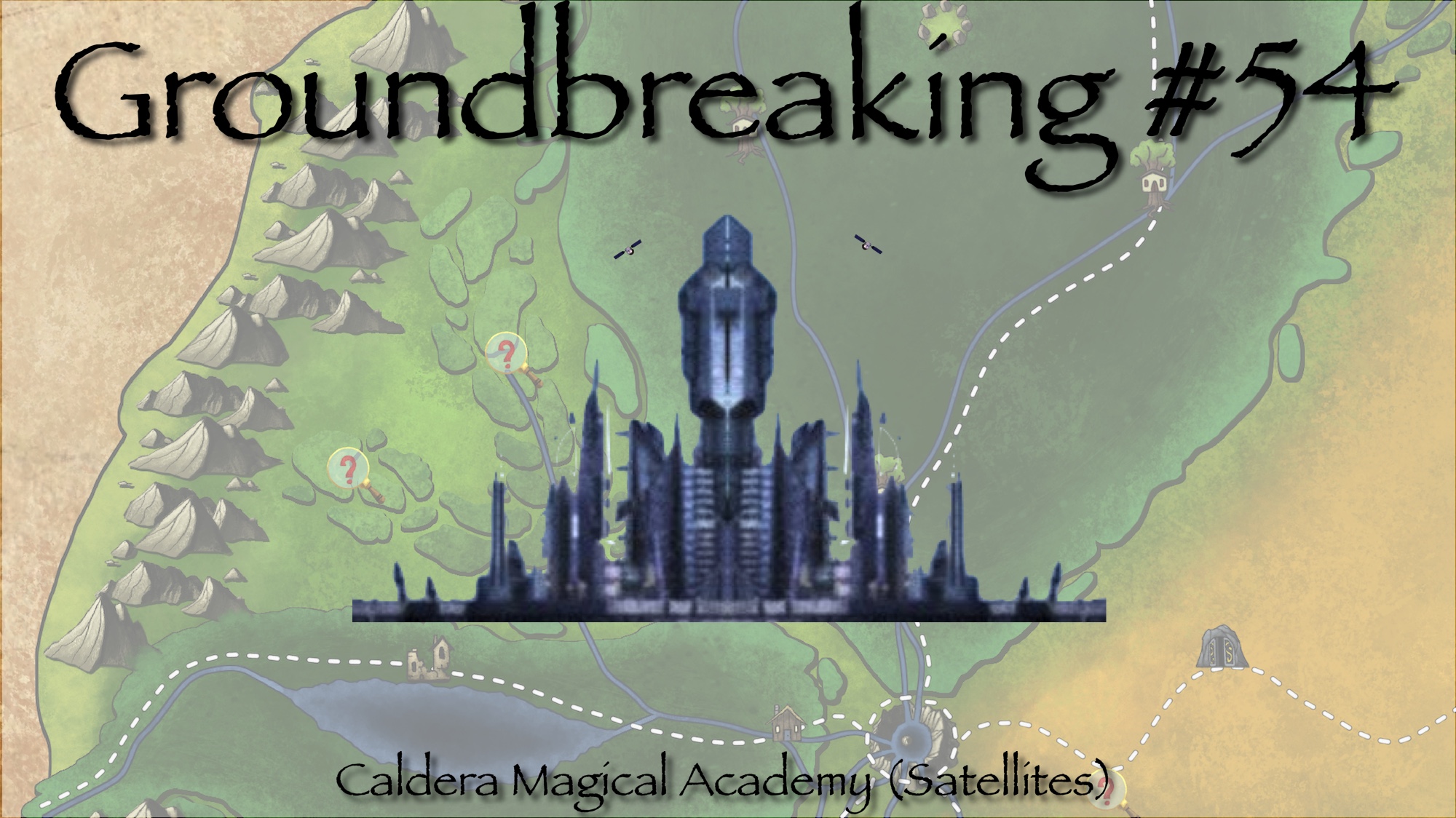Not to be outdone by the bulette to the north, the southern farmlands have their own burrowing creatures. Ankhegs that once roamed the soft soils of the southern fields have been converted into pets to help defend the fields.
Welcome back to Groundbreaking. This week we look at how rolling plains riddled with Ankheg are turned into wildly successful farming communities that stretch for miles upon miles.
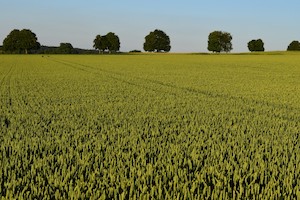 Before settlers arrived, the plains to the south were simple rolling plains of grasses, weeds, wheats, and barleys. Stretching from the base of the mountain all the way to the southern edge of the basin, the plains had a ribbon like appearance as they declined in elevation. A mostly flat stretch of land would give way to slopes of 30° to 45° before leveling off again. These flats stretched roughly half the width of the southern end of the basin, bordered on either side by forested hills. This topography mean that rainwater would simply collect on the ground until it had enough volume to slowly travel downhill across each stretch before rushing down the slopes to the next. Due to the grasses (and other plans and occasional trees) that covered the plains completely, mudslides were rare, and only served to refresh an area every couple hundred years with new soil. I wanted this region to be a place that naturally attracted farmers. I know I am going to have the area overhauled, but I want it to be that they are improving existing qualities more than they are terraforming the area to be something that it isn’t. I am not positive that the rain and grasslands interact the way I describe, but I do know that mudslides are more common after fires due to lack of grasses and plants to hold the land together.
Before settlers arrived, the plains to the south were simple rolling plains of grasses, weeds, wheats, and barleys. Stretching from the base of the mountain all the way to the southern edge of the basin, the plains had a ribbon like appearance as they declined in elevation. A mostly flat stretch of land would give way to slopes of 30° to 45° before leveling off again. These flats stretched roughly half the width of the southern end of the basin, bordered on either side by forested hills. This topography mean that rainwater would simply collect on the ground until it had enough volume to slowly travel downhill across each stretch before rushing down the slopes to the next. Due to the grasses (and other plans and occasional trees) that covered the plains completely, mudslides were rare, and only served to refresh an area every couple hundred years with new soil. I wanted this region to be a place that naturally attracted farmers. I know I am going to have the area overhauled, but I want it to be that they are improving existing qualities more than they are terraforming the area to be something that it isn’t. I am not positive that the rain and grasslands interact the way I describe, but I do know that mudslides are more common after fires due to lack of grasses and plants to hold the land together.
When the lands to the north became unlivable after the volcano erupted, much of the animal life there found its way to the southern lands. With very similar amenities, although slightly less rain, most of the animals found this new home to be extremely welcoming. As time went on, and the lands became crowded, competition for food became fierce among both predator and prey. It was at this time when settlers first appeared in the region, and for reasons they couldn’t comprehend, prey animals outnumbered the predators in a way that didn’t make sense. Taking advantage of their good fortune, they began to lay claim to plots of land, creating pastures in which they could try to coral the horses and bison that originally thrived here as well as bait antelope and deer to make hunting them easier. Once these animals became more stationary, they became much easier to kill by the area’s least known but most deadly hunter, the ankheg. Most herd animals make plenty of noise to attract something like an ankheg, but they are also usually quick enough to notice they are being hunted and scatter. Fencing them in changes that.
 At first, farmers fought amongst themselves about killed or stolen animals. It isn’t until the first series of tunnels begin to collapse that the true threat is revealed. Even worse, they are also pressed with the issue of rising numbers of predators that are now less likely to be hunted from below. These predators also need meals and find fenced in livestock to be a quick meal. As time passes, tempers flare, and livestock decimated, the farmers finally decide that simply trying to defend their homes and their animals aren’t going to work. They cast their nets far and wide, searching for anybody willing to help them with their problem for the meager pay that they can offer. While they wait, they begin coming up with tricks and tactics to keep their homes from being preyed upon. They start by learning ankheg habits and patterns, then they begin baiting prey animals into an area where they know ankheg can get to and is safely distant from their herds. They wound the prey animals and leave nature to manage the rest. Sometimes the ankhegs win, sometimes they don’t … sometimes neither wins, making the farmers the big winners. I recently caught pieces of the various Tremors movies on TV, and it always made me laugh when something disappeared while people were looking the other way. There is always a fight between two rivals about something that goes missing and then the wild and crazy “conspiracy theorist” slash expert hunter is right and finds ways to hunt the hunter.
At first, farmers fought amongst themselves about killed or stolen animals. It isn’t until the first series of tunnels begin to collapse that the true threat is revealed. Even worse, they are also pressed with the issue of rising numbers of predators that are now less likely to be hunted from below. These predators also need meals and find fenced in livestock to be a quick meal. As time passes, tempers flare, and livestock decimated, the farmers finally decide that simply trying to defend their homes and their animals aren’t going to work. They cast their nets far and wide, searching for anybody willing to help them with their problem for the meager pay that they can offer. While they wait, they begin coming up with tricks and tactics to keep their homes from being preyed upon. They start by learning ankheg habits and patterns, then they begin baiting prey animals into an area where they know ankheg can get to and is safely distant from their herds. They wound the prey animals and leave nature to manage the rest. Sometimes the ankhegs win, sometimes they don’t … sometimes neither wins, making the farmers the big winners. I recently caught pieces of the various Tremors movies on TV, and it always made me laugh when something disappeared while people were looking the other way. There is always a fight between two rivals about something that goes missing and then the wild and crazy “conspiracy theorist” slash expert hunter is right and finds ways to hunt the hunter.
Over time, they perfect their knowledge of the ankheg to the point that they are able to domesticate a couple every (ankheg) generation. As more time passes, two halfling families emerge as master handlers, keeping their tricks as family secrets to secure their place in the communities. Each family selectively bred their pets for specific traits that they found made them better pets or tools, and in addition to ensuring that livestock are safer and predators more scarce, they used the tunneling abilities of the ankhegs to cultivate the lands for better farming. It took many generations to completely transform the rolling plains into terraced like farmlands, but the region has flourished manifold because of it. By creating canals that run from the river to the west across the plain and back, the farmers are able to keep a steady supply of fresh water as well as a way to send product back toward the river using its own currents. Terraced farms and farmlands are common in mountainous regions without a lot of flat land. I am not quite sure why I wanted this region to have that layout, despite it already being perfect farmland, but I am sure it will come to me as we continue to develop the area. Division of land with canals makes for easy demarcation and ownership, but the main reason was that I wanted these fields to comprise multiple farms and miles of land. Moving this many resources to market would be extremely time consuming and expensive when you consider wagons/carts, mules, and drivers instead of simple barges.
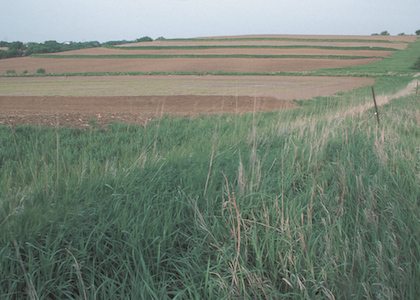 Well, I had no intention of making the ankheg much more than a footnote when I started, but isn’t the whole point of this to make places that are fun, interesting, and unique? Join me next time as I dive a little more into the farmlands and possible the ankheg families themselves.
Well, I had no intention of making the ankheg much more than a footnote when I started, but isn’t the whole point of this to make places that are fun, interesting, and unique? Join me next time as I dive a little more into the farmlands and possible the ankheg families themselves.
The Rumor Mill
Each of the following rumors can be learned by spending an hour or more gathering information from locals. The DC listed is the target DC to determine if the rumor is true (T), false (F), or nobody knows (?).
The Halfling Ankheg Handlers
DC 10 – (F) The halflings have some sort of mind-link super power with bugs.
DC 15 – (F) The halflings created the ankhegs with wizardly help to control the farmlands.
DC 20 – (T) The ankhegs have been made more docile and less dangerous over time.
DC 25 – (?) The halflings secretly run the region like their illicit cityfolk kin.
DC 30 – (T) The halflings work together to ensure their prices are fixed … high.
The Farms
DC 10 – (T) There are many tunnels left over that occasionally swallow people forever.
DC 15 – (?) The many canal bridges in the region house some sort of troll.
DC 20 – (T) There have been strange symbols burned into the crops in recent years.
DC 25 – (F) The farmers hate the ankheg so much they are planning to run them out.
DC 30 – (F) The fields and livestock are completely safe from predators without help.
Please keep the name ideas coming in to our Discord server https://discord.gg/Rt79BAj. After we get a handle on all of the locations, I will be picking names from those submitted to help flesh out the history of the region!

